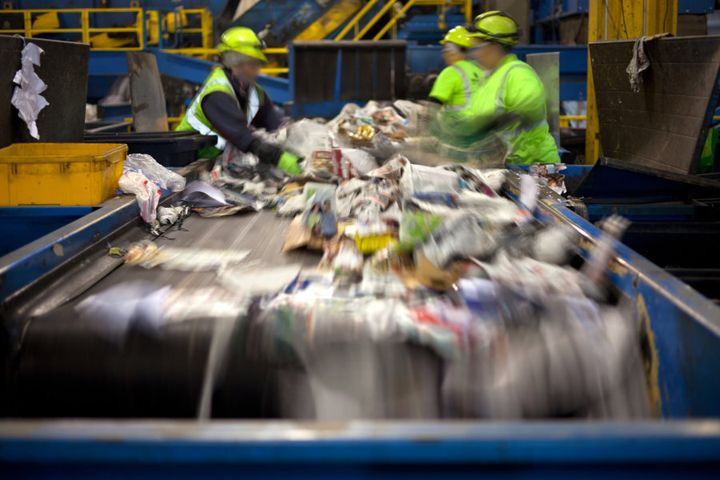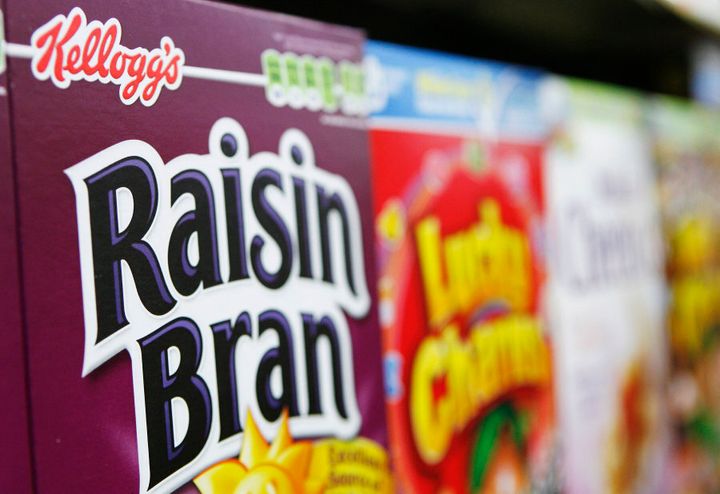
Australians are some of the most prolific consumers in the developed world, on average producing 647kg of municipal waste per person, per year.
Nine in 10 Aussies also believe in recycling -- a circular economy that makes new products from those (again) 647kg of waste. What we don't often know or understand, however, is how to connect the dots... Yes, we know we need to recycle, but where does our recycled waste end up? Is it really worth it?
Anywhere you live in Australia, you are pretty much guaranteed that your recycling is going to become a useful commodity for someone at the end of the process.
The answer is yes, and yes.
This National Recycling Week, we have some answers -- and it can be as simple as turning to your cereal box that you crack open in the morning or the next can of Coke you buy to bask in this summer heat.
"If you buy an aluminium can of drink here in Australia, about 60 percent of it will be recycled," Brad Gray, Head of Campaigns at not-for-profit organisation Planet Ark told The Huffington Post Australia.
"The recycling loop often appears in ways that we don't necessarily know or think about."
The recycling process
It's bin night. You've dropped your week's worth of recycling (including said coke cans and Weet-Bix boxes) into the yellow bin and parked it kerbside. What happens next?
Whilst the economics of recycling tend to differ across states, the recycling process in Australia is reasonably similar.
"The truck comes along, picks up your recycling and takes it to what's called a material recovery facility," Gray said. "It is literally dumped off the back of the truck."
What follows is a series of advanced processes that proceed to separate and sort different materials. And this is where it gets interesting.

"There are big fans that are used to separate paper that then goes off into one collection area," Gray said. "Rotating magnets pick up any steel-based products and there are 'eddy' currents that literally make aluminium products jump off the conveyor belt. These get collected somewhere else."
Plastics are a little more advanced.
"We have light sorters that shoot a beam of light through the plastics and can identify each plastic type -- from 1 through to 7. These are then separated into different containers," Gray said.
"Glass is pretty much what comes out at the end. In most processes, there are people who take brown, clear and green glass and put them in different collection areas."
What happens next?
Once materials have gone through the sorting process, they are bundled up into bales and reused -- where possible -- to manufacture products.
"Anywhere you live in Australia, you are pretty much guaranteed that your recycling is going to go to one of these facilities and become a useful commodity for someone at the other end of the process," Gray said.

"Paper products are quite often remade back into high-quality office paper or toilet paper and cereal boxes are made from recycled cardboard."
It is not economically viable to put your recycling through that process and then send it to landfill. It doesn't make any sense.
Again, plastic reuse is a little more complicated -- as not all plastic types can be recycled.
"Number one plastics can be made back into plastic bottles in Australia. A lot of products made from number five and six products are usually sent overseas to be remade into products such as toys and coat hangers that we will typically end up buying back."
As to whether any recycled products end up in land fill, Gray said this should not be a concern.
"It is not economically viable to put your recycling through that process and then send it to landfill. It doesn't make any sense."
Closing the loop
The recycling loop does (and should) not end there. Otherwise, we are only doing half the job.
We need to look at buying the right office paper and the right toilet paper so that we can create the market here in Australia that we need.
Gray recommends buying back the products that you put in your recycling in the first place.
"If you are in an office and you are putting your high-quality paper in the recycling bin but you're not prepared to buy recycled paper back at the end, the economics of recycling don't stack up," Gray said.
"We need to look at buying the right office paper and the right toilet paper so that we can create the market here in Australia that we need, and so that we don't need to be shipping materials overseas to be processed.
Whilst this can happen in ways that we may not think about -- hello there, recycled Coke can -- we need to be more conscious of the products that are filling our kitchen shelves.
Click below to follow HuffPost Australia on Snapchat!
